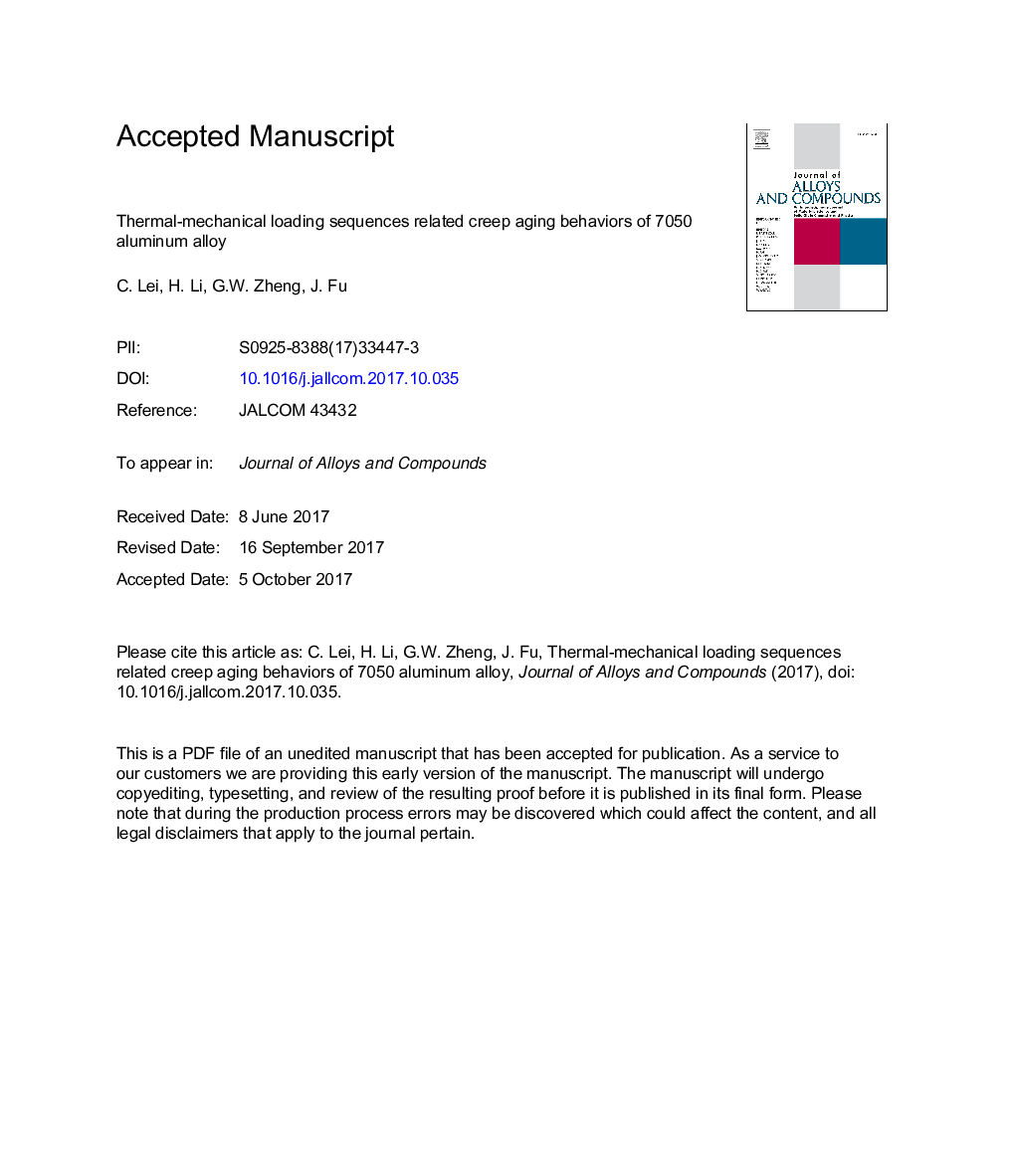| کد مقاله | کد نشریه | سال انتشار | مقاله انگلیسی | نسخه تمام متن |
|---|---|---|---|---|
| 5458013 | 1516163 | 2018 | 22 صفحه PDF | دانلود رایگان |
عنوان انگلیسی مقاله ISI
Thermal-mechanical loading sequences related creep aging behaviors of 7050 aluminum alloy
ترجمه فارسی عنوان
توالی های بارگذاری حرارتی مکانیکی مربوط به رفتارهای پیری خزش 7050 آلیاژ آلومینیوم است
دانلود مقاله + سفارش ترجمه
دانلود مقاله ISI انگلیسی
رایگان برای ایرانیان
کلمات کلیدی
توالی بارگیری حرارتی مکانیکی، تغییر شکل خزش خاصیت مکانیکی، رسوب، 7050 آلیاژ آلومینیوم، سن ختم تشکیل شده،
موضوعات مرتبط
مهندسی و علوم پایه
مهندسی مواد
فلزات و آلیاژها
چکیده انگلیسی
In creep age forming (CAF), the shape forming and performance improvement are attributed to many complex thermal-mechanical processes, viz., thermal-mechanical loading, holding and unloading, successively. However, the alternative of aging furnace or autoclave will cause inverse thermal-mechanical loading sequences, viz., loading prior to heating (LH) in aging furnace or heating prior to loading (HL) in autoclave, which may affect the creep aging behaviors. Taking 7050 aluminum alloy as the case material, the overall creep aging behaviors under the above contrary thermal-mechanical loading sequences were comparatively studied using a series of constant-stress creep aging tests. The evolution of microstructure, mechanical properties and electric conductivity were characterized by high-resolution transmission electron microscopy (HRTEM), tensile strength tests and eddy current method, respectively. The final deformation of the specimen loaded prior to heating (LH specimen) is about 1.55 times greater than that of the specimen heated prior to loading (HL specimen). This is because the heating stage in HL is merely a non-isothermal stress-free aging process without creep occurrence, while the heating stage in LH corresponds to a non-isothermal creep aging process, in which creep deformation occurs and even accounts for 44.4% of the final deformation. The different microstructures of the specimens after LH and HL are so significant that affect the further creep deformation and microstructure evolution in following holding stage. The applied stress during heating stage in LH promotes solute diffusion and dislocation movement, leading to accelerated nucleation and growth of intragranular and grain boundary precipitates. After holding and unloading stages, the LH specimen has more uniform distributed intragranular precipitates and more discontinuous grain boundary precipitates, which respectively cause higher mechanical strength and better stress corrosion cracking resistance.
ناشر
Database: Elsevier - ScienceDirect (ساینس دایرکت)
Journal: Journal of Alloys and Compounds - Volume 731, 15 January 2018, Pages 90-99
Journal: Journal of Alloys and Compounds - Volume 731, 15 January 2018, Pages 90-99
نویسندگان
C. Lei, H. Li, G.W. Zheng, J. Fu,
